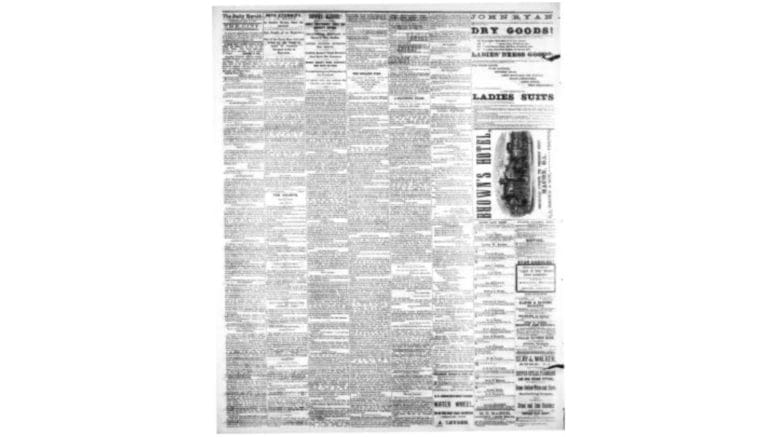[This an evergreen article that we periodically republish as our readership grows, often with added materials from the Georgia Historic Newspapers database and website housed at the University of Georgia as we discover them]
I did a search on our site for things we’d written in the past involving Bolton, Riverside, Whittier Mill (aka “Chattahoochee”) and stumbled on this gem.
The original article was published May of 2016.
It involved an incident in Iceville, a 19th-Century resort on the grounds of an ice company in Bolton.
Don’t bury the lede
There is a guideline in journalism: “Don’t bury the lede.” A lede, sometimes spelled “lead”, is the opening of a news story. It’s the part that gets you interested in reading further. Burying the lede is opening with details that don’t grab your interest, and leaving the real point of the story for later. I found a good example of burying the lede in a set of companion articles in an old Atlanta newspaper.
I’d been researching a 19th Century Atlanta community called Iceville, located on the Chattahoochee River where the neighborhood of Bolton is located now. Iceville was named for the Atlanta Ice Company, which made ice from Chattahoochee water. The grounds of the company was a major picnic destination in the 1870s. It was within walking distance of the passenger rail terminal, and featured dancing, fishing, and tours of the ice company.
On May 14, 1873, the Atlanta Daily Herald ran the following story:
“Picnic of the Hibernian Society At Iceville
At half past eight o’clock yesterday morning, the Irish element of Atlanta’s population with many others got aboard the train and “Ho! for Iceville!” was the watchword. It was a beautiful morning — the girls looked charming as they always do — the young men had on clean shirts and were newly shaved, and the old ones were not much behind in the matter of dress …”
The story goes on to describe the efficiency of the organizers, and recount some of the prominent attendees, and continues,
“Meantime, those who did not dance sought suitable trysting places, and doubtless the ‘old, old, story’ was told many times during the day. The beautiful Chattahoochee, rolling in full view, attracted much of the attention of lovers of nature, while the curious took occasion to inspect the ice works.”
The next paragraphs described the dancing, a fistfight, and regrets over the absence of two prominent members of the Hibernian Society.
The story closed with:
“Just after six o’clock the whistle blew, and the party, sated with rural pleasures, started for Atlanta in high spirits, but the gaiety was unfortunately all forgotten when the sad accident described in another column occurred. Otherwise the whole was such a scene as only the jolly, fun-loving Irish could set up.”
The “sad accident” was recounted under the next headline: “One of the Party Run Over and Killed by the Train.”
To be fair to the Atlanta Daily Herald, newspapers had different standards in the 19th Century. But even then, the transition between the two stories must have been jarring for readers.
You can go to the original source by following this link to a digitized copy of the Atlanta Herald.
About Georgia Historic Newspapers
Georgia Historic Newspapers is a part of the GALILEO project and is housed at the University of Georgia. It’s an amazing resource for anyone with an interest in the history of Georgia and its regions.
According to the “About” page on its website:
The Georgia Historic Newspapers Archive is a project of the Digital Library of Georgia (DLG), a part of Georgia’s Virtual Library GALILEO and is based at the University of Georgia Libraries. Since 2007, the DLG has partnered with universities, archives, public libraries, historical societies, museums, and other cultural heritage institutions to digitize historical newspapers from around the state. The archive is free and open for public use and includes over two million Georgia newspaper pages between 1763 and 2021.
Newspaper titles are regularly digitized and added to the archive. If you are interested in including a particular title, you can visit our participation page. A majority of the newspapers on this site were digitized from the microfilm produced by the Georgia Newspaper Project (GNP). For more information about the microfilm available through the GNP, please visit their website.
